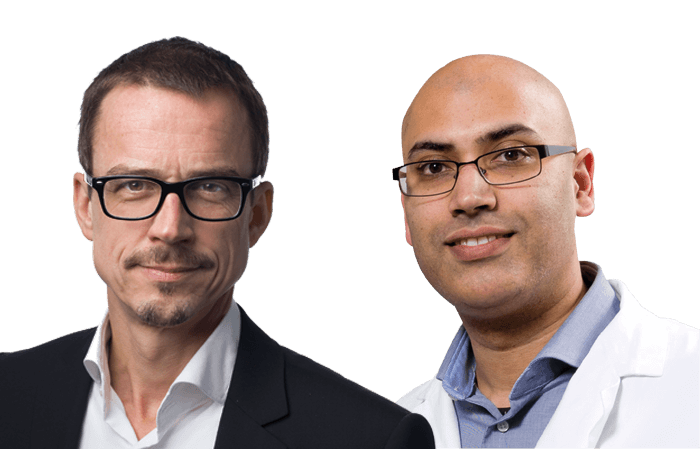The Microscale Separations and Bioanalysis (MSB) symposium has evolved over the last few years into a recognized forum for the discussion of new developments and ideas at the microscale – and their impact across various analytical fields. We talk to organizers Govert Somsen and Rawi Ramautar about the upcoming conference and why, when it comes to the future of analytical technologies, it may pay to think small...

Why are microscale separations important?
GS: Miniaturization of separation techniques is a dominating trend in modern analytical chemistry. Requirements related to quality, health, environment, safety, security, and costs are critical driving forces for this ‘scaling down’ of techniques. And it leads to exciting developments, not only in micro- and nano-LC, capillary electrophoresis, capillary GC and microfluidic separations, but also in lab-on-a-chip, sample pretreatment and detection methodologies. RR: The importance of microscale separation techniques is also increasing in drug analysis, metabolomics, (glyco)proteomics, intact protein analysis and bioanalysis in general. Microscale analytical tools often provide better sensitivity and separation efficiency, and enhance the analytical performance of mass spectrometry-based methods, which is crucial for the reliable chemical profiling of complex samples.What is the focus of the conference?
GS: MSB 2017 provides a forum for discussing fundamental and application aspects of microscale separations and related techniques. As indicated by the name, the symposium focuses not just on micro-separation science, but also on its applications in life science research. RR: The MSB meeting especially encourages the exchange of ideas of unpublished scientific work on microscale separations in an intimate and confidential setting. To this end, MSB 2017 will be organized at an ‘isolated’ venue in Noordwijkerhout, providing closely grouped lecture and poster rooms.Who do you hope will attend?
GS: Scientists exploring, designing and utilizing microscale separation technologies as an important component of their research and/or development program. MSB 2017 will be rewarding and inspiring both for fundamental micro-separation researchers and life science-oriented users seeking strategies to improve performance and impact by involving microscale techniques. We want to bring scientists together to debate challenges and explore new ideas, with the aim of fully realizing the power of separations at microscale.How has the conference changed in the past three years?
GS: The intention of the Strategic Planning Committee (SPC) in 2013 was to shape MSB into a forum of truly engaging dialogue and deep discussion. We know from experience that real discussion and interaction cannot be taken for granted, but needs to be actively stimulated and structured. Some key attributes for imposing the new format were: (i) a limited number of invited speakers, (ii) building at least 70 percent of the oral program from submitted abstracts, (iii) a double-blind peer review process ensuring that quality – and not who you are – gets you an oral presentation, (iv) at least a third of the duration of oral presentations reserved for discussion moderated by an active chair person, and (v) daily Science Café lunch seminars by vendors presenting and discussing advances in commercial separation technology.Which techniques are emerging within the field?
GS: Developments in microscale separation science continuously lead to improved analytical performances. For example, new multidimensional liquid chromatography systems involving micro- and nano-columns are yielding unprecedented peak capacities, advancing proteomics and biomarker discovery. Progress in CE-MS interfacing provides new possibilities for proteoform separations, aiding detailed characterization of biopharmaceuticals and endogenous proteins. Recent advances in ion mobility-mass spectrometry have opened new avenues for studying 3D structures of (macro)molecules from complex mixtures. RR: Over the past few years, microscale separation techniques, including electrodriven and chromatographic methods, have been developed for analyzing small samples in a wide range of application fields. This will remain an active research domain in the future. I also expect major developments in the downscaling of sample preparation procedures, more effective hyphenation of microfluidic separation modules to nano-electrospray ionization (ESI)-MS, and microfluidic-based diagnostic assays with optical detection as the read-out. MSB 2017 will be held March 26-29 at Conference Center Leeuwenhorst, Noordwijkerhout, the Netherlands.msb2017.org/




